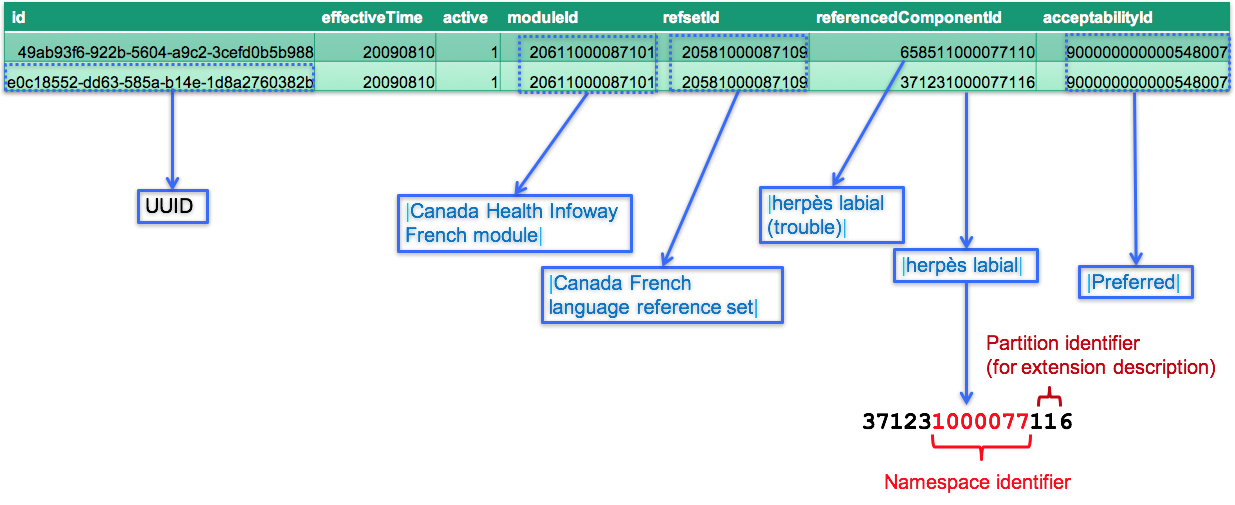Whenever a new description is added in an extension, the language preferences associated with that description must be specified. This is done by adding rows to a language reference set to indicate whether each description is | acceptable| or | preferred| in the given language or dialect.
Attributes
As previously mentioned, all reference sets use six common attributes. In addition to these, a | Language type reference set| also includes an acceptabilityId. The table below explains how each of these attributes is populated in a | Language type reference set| .
Table 4.3.2.4.1-1: Summary of language reference set attributes
| Attribute | Data Type | Use in a Language Reference Set |
|---|---|---|
| id | UUID | Can be generated using a standard UUID generator. |
| effectiveTime | Time | Specifies the date on which this version of the reference set member was released. |
| active | Boolean | Indicates whether or not the reference set member is active at the given effectiveTime. This value is set to "1" for new reference set members. |
| moduleId | SCTID | Identifies the module to which this reference set member belongs. For members in an extension, this will always be a module created by the extension producer. |
| refsetId | SCTID | This refers to the concept id of a descendant of | Language type reference set| and represents the language or dialect for which the preferences are defined. The reference set concept may be created in the extension, or may belong to a module on which the extension depends (e.g. the international core module). |
| referencedComponentId | SCTID | The referencedComponentId refers to the id of the description whose acceptability is being defined. |
| acceptabilityId | SCTID | The acceptabilityId indicates whether the description referenced by the referencedComponentId is | Acceptable| or | Preferred| for the given language or dialect. |
Example
In Figure 4.3.2.4.1-1 below, two rows from the 20581000087109 | Canada French language reference set| are shown. Note that these rows specify French Canadian language preferences for the concept | Herpes labialis| .
Figure 4.3.2.4.1-1: Rows from the |Canada French language reference set
Please note the following:- The id column shows a UUID that has been uniquely generated for each refset member.
- The moduleId indicates that these refset members belong to the | Canada Health Infoway French module| .
- The refsetId indicates that both members are part of the | Canada French language reference set| .
- The referencedComponentId indicates the description for which the acceptability is being specified.
- The acceptabilityId indicates that both of these descriptions are | Preferred| in this language.
Feedback
